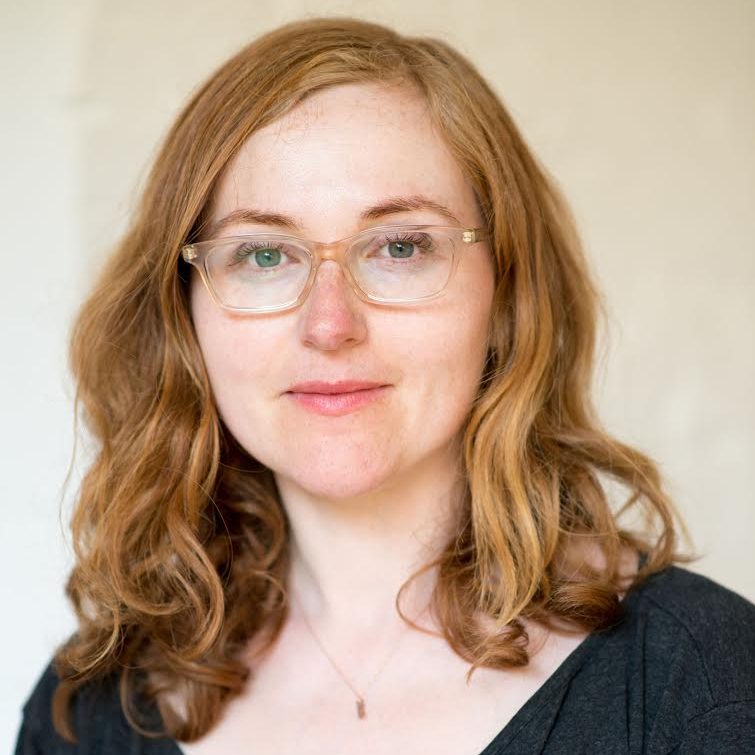Sophie Kahn is a digital artist and sculptor, whose work addresses technology’s failure to capture the unstable human body.
Kahn earned a BA (Hons) in Fine Art/History of Art at Goldsmiths College, University of London; a Graduate Certificate in Spatial Information Architecture from RMIT University, Melbourne; and an MFA in Art and Technology Studies at the School of the Art Institute of Chicago.
Kahn is the co-host of the YouTube channel File Exchange, and serves as a mentor with NewInc.
Past residencies include the Museum of Arts and Design, New York; Pioneer Works, Brooklyn; and the Elizabeth Foundation for the Arts, New York.
Kahn has exhibited her artwork in New York, Los Angeles, London, Paris, Sydney, Tokyo, Osaka and Seoul. Her video work has been screened in festivals including Transmediale, Zero1 San Jose Biennial, Dance Camera West, Trampoline, Frequency, Currents New Media Festival and the Japan Media Arts Festival. Sophie has taught in the Department of Digital Arts at Pratt Institute as a Visiting Associate Professor, and at Columbia College, Chicago, as a visiting instructor.
Recent exhibitions include Transfigured at C24 Gallery in New York, Out of Body: Sculpture Post-Photography at bitforms gallery, New York, and Machines for Suffering (solo) at Bannister Gallery, Rhode Island College, RI. Her work has been supported by the Australia Council for the Arts, the Experimental Media and Performing Arts Center at Rensselaer Polytechnic, and other private funding bodies. Her work is held in public and private collections in the United States and internationally. She is a New York Foundation for the Arts Digital and Electronic Arts Fellow.
Recent online exhibitions include Dematerialized with SVA, In The Bardo: Unpacking the Real on FeralFile and Synthetic Corporeality with Meet Digital Culture Centre, Milan.
Sophie Kahn’s work investigates the complexity, and the poetics, of capturing the body in the digital age.
She uses a 3D laser scanner to create sculptures, prints, video and digital artworks. This scanner was never designed to capture the human body in motion–when confronted with a moving form, the machine receives conflicting spatial coordinates and generates incomplete images. Kahn converts this deliberately damaged data into the form of prints, videos and hand-painted, 3D printed sculptures. Her fragmented forms draw inspiration from funereal and memorial sculpture, and can read as faux-historical forgeries and/or contemporary relics.
The psychological underpinnings of Kahn’s work are based upon the artist’s personal history of chronic illness and disability. Looking through the lens of medical history, Kahn examines significant moments (e.g. the ‘invention’ of hysteria at the Salpetriere asylum) where older technologies like photography similarly failed to capture the female-identified body and its attendant madnesses. For her sculpture and print series Machines for Suffering, Kahn 3D scanned dancers as they re-enacted the supposed choreography of an attack of hysteria. These works suggest an unstable, monumental, body-as-architecture, under continuous construction — or perhaps demolition.
Kahn looks to her early training as a photographer to amplify the eeriness of creating digital duplications of the human body within the space of the virtual. Her most recent series, The Divers, was created with Butoh performers at Pioneer Works, and features weightless body/avatars rendered in a 3D digital void. It echoes the monochrome transparency of Victorian spirit photography, and the vernacular language of tombstones. These images speak to the inherent deathliness of 3D replications of the digital body, and suggest the separation of body and digital avatar as an almost religious operation.
In all her works, the human body is de-materialized, separated from the physical, and then re-materialized into a vastly altered form. Like many of her contemporaries who also use 3D software and fabrication tools ‘against the grain’, Kahn is interested in situating these modes of seeing within a critical context. Subsequently, the artist challenges standard viewpoints by creating her own subjective, embodied and very human way of seeing through a technological lens.
